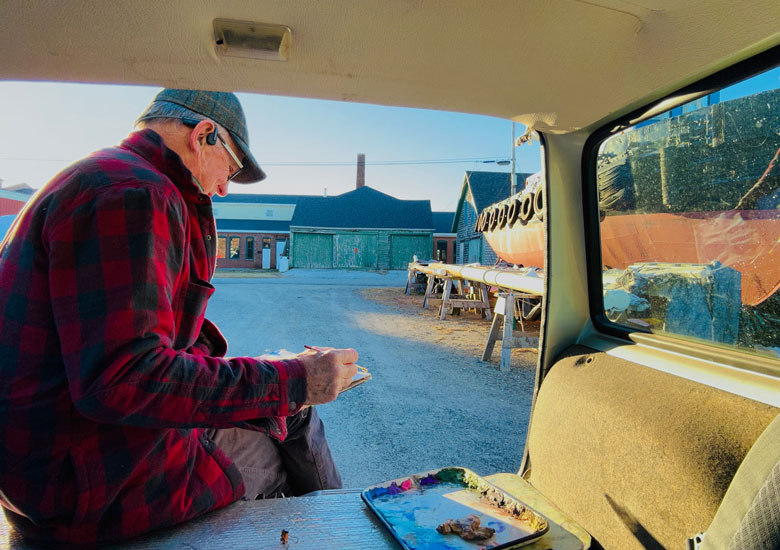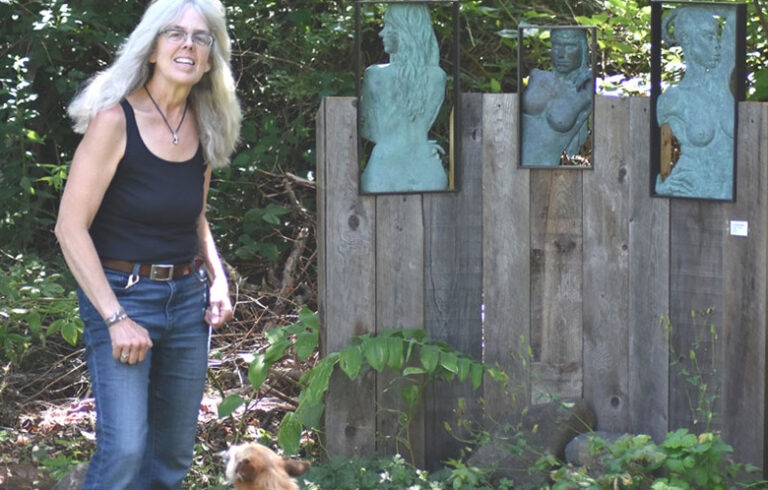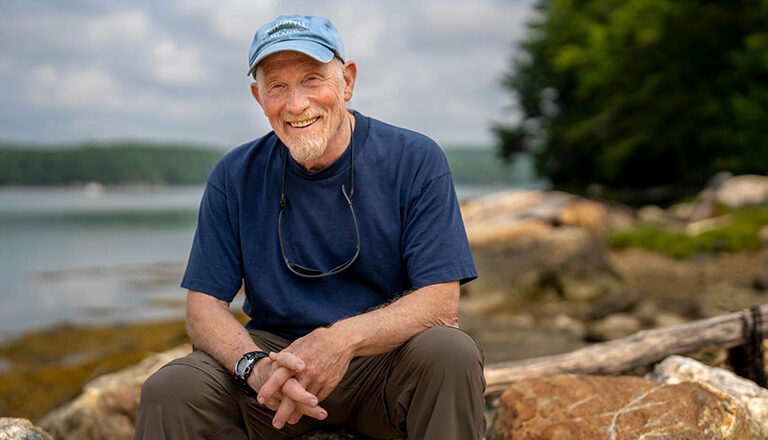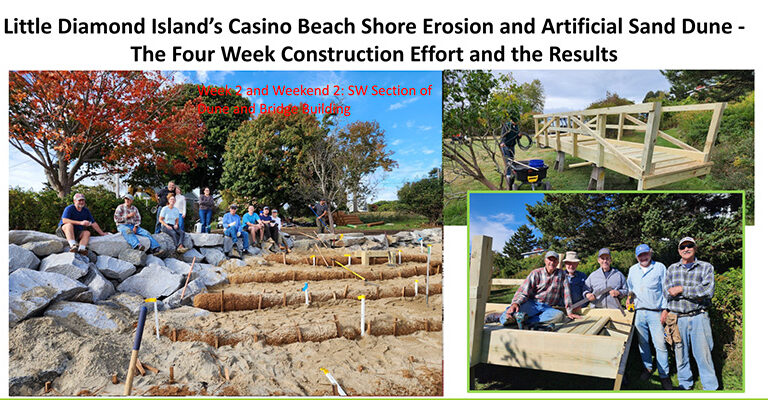
In 1986 painter David Dewey, his wife Kathy, and their two daughters began summering in Owls Head village. They were drawn to the area by artist friends, most notably Lois Dodd, who lives in Cushing. At the same time, Dewey declares, “the natural, human environment, the light in Maine, and its history in American art—as a painter, I needed to be here!”
Dewey wasted little time settling into painting Owls Head, Rockland, and other nearby locales.
“I never considered myself a marine painter,” he relates, but the “luminous expansiveness” of coastal scenes compelled him to take watercolor brush in hand and paint.
In “Sea Street Place” Dewey represents a “nostalgic old-world working harbor” with its industrial buildings and boats, including the handsome and humble tug Robbins Reef. The painting is a stunning study of light and shadow, with a wonderful pale blue running from end to end lending it visual balance.
As a painter of light, Dewey explains, watercolor is a natural medium.
Late afternoon sun turns the background building into a plane of yellow, its geometry set off by smoke rising from a chimney. The tugboat almost seems to plow into this configuration of angular shapes.
“My ideas begin with, and are driven by, observation and recording subjects that have a structural and emotional framework,” writes Dewey. His recent Rockland works, “obsessed with” over the past three years, are underpinned by observational and studio works going back to when he first began “wandering around” getting to know the city as a subject.
The watercolor’s horizontal format grew out of Dewey’s Weskeag Marsh paintings from 2020, gorgeous renderings of the tidal wetland in South Thomaston. That subject caused him to “stretch out and see things as if I was looking at a long storyboard.”
As a painter of light, Dewey explains, watercolor is a natural medium.
“It is all about light through the transparent layering of color pigments on white paper,” he writes, adding, “It both represents and symbolizes light by its very nature.” Early morning and late afternoon with their “richness of color” are his favorite times of day to paint.
In a statement for his recent show at Caldbeck Gallery, Dewey harks back to Edward Hopper who spent seven weeks in Rockland in 1926 painting various subjects in watercolor, including rusting trawlers tied up along the waterfront.
Hopper’s primary interest was in “sunlight and shadow.” The structure of light, writes Dewey, “provided a dynamic abstract framework to his compositions.” Dewey supposes he was drawn to Rockland for similar reasons. “My good fortune is that I’ve spent most of my career painting here.”
A distinguished professor of art and author of the ground-breaking The Watercolor Book, Dewey was co-founder and co-director of the Joseph A. Fiore Art Center at Rolling Acres Farm in Jefferson and curator of the Firehouse Center Art Center in Damariscotta. His paintings are part of a number of important public collections, including the Bowdoin and Colby College museums, the Farnsworth and Portland museums, the Frye Art Museum in Seattle, and the Addison Gallery of American Art in Andover, Mass.
In writing about Dewey’s remarkable accomplishments in watercolor, Susan Larsen, former Farnsworth Museum curator and director of the Rabkin Foundation, praises his ability to extend its reach.
“He has added new dimensions to its technical vocabulary,” she states, “and created a body of work whose evanescent beauty stirs the soul and leaves us breathless before the wonders of a place we know and love.” That’s Dewey’s gift: a brilliant sense of place and the wherewithal to share it with us.
Dewey is represented by the Caldbeck Gallery in Rockland. You can learn more about the artist at www.daviddeweystudio.com.





